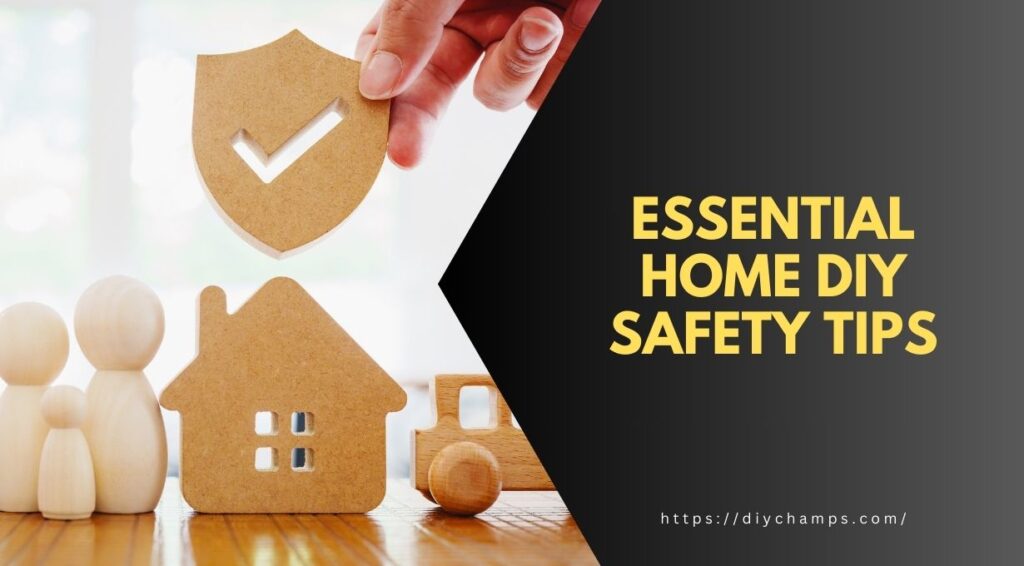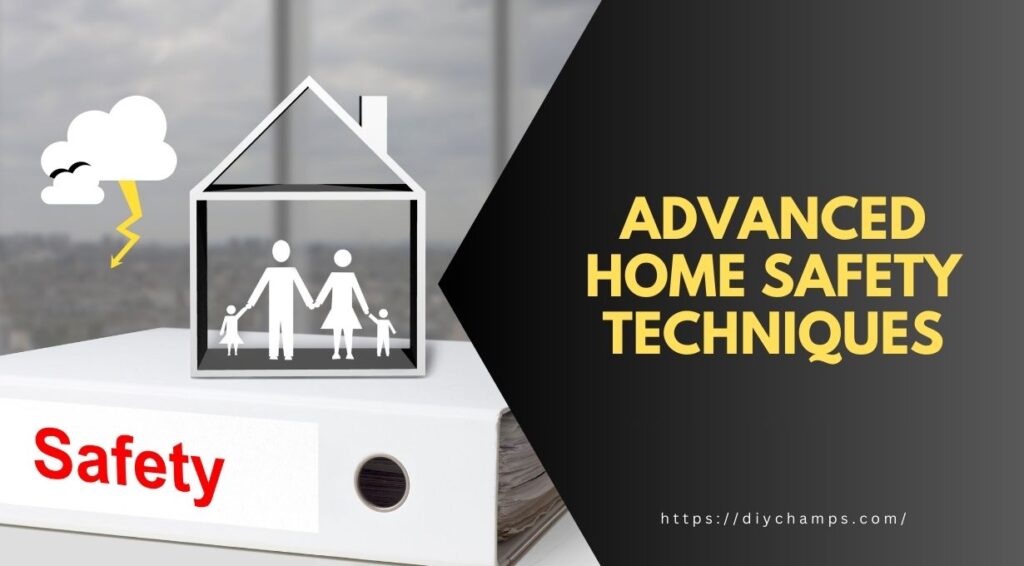When it comes to creating a safe and secure home, home DIY safety tips are your best friend. Whether you’re a seasoned DIY enthusiast or just starting out, ensuring your home is a safe haven for everyone—especially the elderly—is crucial. From installing a reliable alarm for old persons to implementing home security tips, there’s a lot you can do to prevent accidents and enhance safety.
With the aging population growing, keeping elderly at home safe has become a top priority. Falls, furniture-related injuries, and security breaches are common concerns. But with the right safety measures at home, you can significantly reduce these risks. This article dives deep into practical home safety techniques, environment safety tips, and security safety tips to help you create a secure and comfortable living space for your loved ones.
Why Home Safety Matters
Home is where we feel most secure, but it can also be a place where accidents happen. According to the National Safety Council, falls are the leading cause of injury-related deaths among adults aged 65 and older. Additionally, home invasions and fires are real threats that can be mitigated with proper home safety for seniors and general safety tips.
By taking proactive steps, you can prevent accidents, improve security, and ensure peace of mind for everyone in your household. Let’s explore some actionable home DIY safety tips to get started.

Essential Home DIY Safety Tips
1. Install an Alarm for Old Persons
One of the most effective ways to ensure home safety for seniors is by installing a reliable old person fall alarm. These devices are designed to detect falls and send immediate alerts to caregivers or emergency services.
How to Implement:
- Choose wearable devices (like wristbands) or wall-mounted sensors.
- Place sensors in high-risk areas: bathrooms, staircases, and bedrooms.
- Test monthly and ensure connectivity to emergency services.
Pro Tip: Pair alarms with motion-activated night lights to prevent nighttime tumbles.
2. Declutter and Modify Living Spaces
Creating a safe environment for seniors involves making thoughtful modifications to your home.
- Remove Tripping Hazards: Secure loose rugs, clear clutter, and ensure walkways are free of obstacles.
- Install Grab Bars: Place grab bars in bathrooms and near stairs to provide support.
- Improve Lighting: Ensure all areas of the home are well-lit, especially staircases and hallways.
3. Anchor Furniture to Prevent Tip-Over Accidents
Furniture can pose a significant risk, especially for the elderly. Furniture walking elderly is a term used to describe unsteady furniture that can tip over and cause injuries.
- Anchor Heavy Furniture: Use brackets to secure bookshelves, dressers, and TVs to the wall.
- Choose Stable Furniture: Opt for low-profile furniture with a wide base to reduce the risk of tipping.
- Rearrange for Safety: Ensure furniture is arranged to create clear pathways and reduce the risk of falls.
4. Enhance Home Security Tips
Home security is a critical aspect of safety measures at home. A secure home not only protects against intruders but also provides peace of mind.
- Install Smart Locks: Smart locks allow you to control access to your home remotely.
- Use Security Cameras: Place cameras at entry points to monitor activity.
- Set Up Motion Sensors: Motion-activated lights can deter intruders and improve visibility at night.
5. Environment Safety Tips for a Healthier Home
Creating a safe home environment goes beyond physical modifications. Consider these environment safety tips to promote overall well-being.
- Improve Air Quality: Use air purifiers and ensure proper ventilation to reduce allergens and pollutants.
- Prevent Mold Growth: Fix leaks promptly and use dehumidifiers in damp areas.
- Reduce Fire Risks: Install smoke detectors and keep fire extinguishers in key areas like the kitchen and garage.
6. Home Safety Techniques for Seniors
When keeping elderly at home, it’s important to implement specific home safety techniques tailored to their needs.
- Non-Slip Flooring: Use non-slip mats in bathrooms and kitchens to prevent falls.
- Emergency Response Systems: Equip seniors with wearable devices that can alert caregivers in case of an emergency.
- Regular Safety Checks: Periodically inspect the home for potential hazards and address them immediately.
7. Fire Safety Measures
Fires are one of the most dangerous hazards in any home. Implementing fire safety tips can save lives and property.
- Install Smoke Detectors: Place smoke detectors on every floor, especially near bedrooms and the kitchen. Test them monthly and replace batteries annually.
- Create an Escape Plan: Ensure everyone in the household knows how to exit the home quickly in case of a fire. Practice this plan regularly.
- Keep Fire Extinguishers Handy: Place fire extinguishers in high-risk areas like the kitchen, garage, and near fireplaces. Learn how to use them properly.
- Avoid Overloading Electrical Outlets: Overloaded circuits can cause electrical fires. Use surge protectors and avoid plugging too many devices into one outlet.
8. Childproofing for Families with Kids and Seniors
If your home includes both children and elderly family members, childproofing is essential.
- Secure Cabinets and Drawers: Use childproof locks to keep cleaning supplies, medications, and sharp objects out of reach.
- Cover Electrical Outlets: Install outlet covers to prevent children from inserting objects into sockets.
- Use Safety Gates: Install gates at the top and bottom of stairs to prevent falls.
9. Preventing Carbon Monoxide Poisoning
Carbon monoxide (CO) is a silent killer. Implementing environment safety tips can help prevent CO poisoning.
- Install CO Detectors: Place carbon monoxide detectors near sleeping areas and on every floor of your home.
- Maintain Appliances: Regularly inspect and maintain gas-powered appliances like furnaces, water heaters, and stoves.
- Ensure Proper Ventilation: Never use generators, grills, or other fuel-burning devices indoors.
10. Outdoor Safety Measures
Your home’s exterior also requires attention to ensure overall safety.
- Secure Railings: Check that porch and stair railings are sturdy and at the correct height to prevent falls.
- Light Pathways: Install outdoor lighting along walkways and driveways to prevent trips and falls at night.
- Trim Trees and Shrubs: Overgrown vegetation can obscure visibility and provide hiding spots for intruders.

Advanced Home Safety Techniques
1. Smart Home Technology for Safety
Incorporating smart home devices can elevate your home safety techniques.
- Smart Doorbells: These devices allow you to see and communicate with visitors remotely, enhancing security.
- Automated Lighting: Use timers or motion sensors to control lights, giving the appearance that someone is home even when you’re away.
- Water Leak Detectors: These devices alert you to leaks, preventing water damage and mold growth.
2. Emergency Preparedness
Being prepared for emergencies is a critical aspect of safety measures at home.
- Create an Emergency Kit: Include essentials like water, non-perishable food, flashlights, batteries, and first-aid supplies.
- Know Your Utilities: Learn how to shut off water, gas, and electricity in case
Case Study: The Impact of Home Safety Modifications
A 2023 study by the Journal of Aging Research found that homes with safety modifications, such as grab bars and fall alarms, reduced the risk of injuries by 60%. One participant, a 72-year-old woman, shared how installing a fall alarm for old persons saved her life after a fall in her bathroom.
This highlights the importance of taking proactive steps to enhance home safety for seniors.
Expert Opinions on Home Safety
Dr. Emily Carter, a geriatric specialist, emphasizes the importance of home safety for seniors:
“Falls are preventable, and small changes in the home environment can make a huge difference. Installing grab bars, improving lighting, and using fall alarms are simple yet effective ways to protect older adults.”
Similarly, home security expert John Matthews advises:
“A secure home is a safe home. Combining physical modifications like smart locks and cameras with behavioral changes, such as locking doors and windows, can significantly reduce the risk of break-ins.”
Statistics That Highlight the Importance of Home Safety
- Falls Among Seniors: According to the CDC, one in four Americans aged 65+ falls each year, resulting in over 3 million emergency room visits.
- Home Invasions: The FBI reports that a burglary occurs every 25.7 seconds in the U.S., highlighting the need for robust home security tips.
- Fire Incidents: The National Fire Protection Association states that home fires cause an average of 2,620 deaths annually, many of which could be prevented with proper safety measures.
Conclusion
Creating a safe and secure home doesn’t have to be overwhelming. By following these home DIY safety tips, you can protect your loved ones and create a comfortable living environment. From installing a reliable alarm for old persons to implementing home security tips, every step you take brings you closer to a safer home.
Remember, home safety for seniors is not just about preventing accidents—it’s about providing peace of mind and ensuring a high quality of life. Start today by assessing your home and making the necessary changes. Your loved ones will thank you for it.
1. What is the best alarm for old persons?
The best fall alarms are those that offer reliable detection, easy installation, and quick alert systems. Popular options include Life Alert and Medical Guardian.
2. How can I make my home safer for elderly parents?
Start by removing tripping hazards, installing grab bars, and improving lighting. Consider adding a fall alarm for old persons and ensuring furniture is secure.
3. What are the most common home safety risks for seniors?
Falls, fires, and home invasions are the most common risks. Implementing home security tips and safety measures at home can significantly reduce these risks.
4. How often should I check my home for safety hazards?
Conduct a thorough safety check at least twice a year. Regular inspections help identify and address potential hazards before they become serious issues.
5. How can I improve home safety on a budget?
Many home DIY safety tips are cost-effective. Start with simple changes like removing tripping hazards, improving lighting, and installing inexpensive safety devices like outlet covers and grab bars.
Check this Advance DIY Tools and Techniques Blog as a DIYer

I’ve been absent for a while, but now I remember why I used to love this web site. Thanks , I will try and check back more often. How frequently you update your web site?